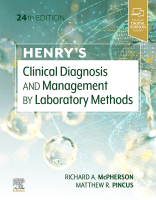Physical Address
304 North Cardinal St.
Dorchester Center, MA 02124

Key Points Familiarity with the basics of nucleic acid biochemistry and biology is required to understand molecular diagnostic testing. The chemical stability of double-stranded DNA stands in contrast to the lability of single-stranded RNA. Base pairing of nucleic acids is…

Key Points The revolution in molecular biology continues to have a profound impact on the field of anatomic and clinical pathology (diagnostic medicine). Techniques, including polymerase chain reaction and other amplification and hybridization methods, are capable of detecting DNA in…

Key Points Collect specimens from site of infection before initiating therapy. Collect an adequate volume of sample for testing required. Tissue, fluid, or aspirates are always superior to a swab specimen. The only exception is collecting culture material from a…

Key Points Accurate diagnosis of parasitic infection usually depends on macroscopic or microscopic examination of specimens that have been appropriately collected and preserved. Thick and thin blood smears are useful for detecting and characterizing organisms found in the blood. Fecal…

Key Points Viruses cause more human infections than any other group of microorganisms and produce diseases that range from benign to highly lethal. Viral pathogens, including SARS-CoV-2, influenza A subtypes, arboviruses, and hemorrhagic fever viruses, are continuously being discovered or…

Key Points Treatable rickettsial infections, including life-threatening Rocky Mountain spotted fever, boutonneuse fever, epidemic typhus, murine typhus, scrub typhus, human monocytotropic ehrlichiosis, and human granulocytotropic anaplasmosis, are seldom diagnosed serologically during the acute stage of illness owing to absence of…

Key Points Chlamydia trachomatis , the most common notifiable condition in the United States, is the most common bacterial cause of sexually transmitted disease in the United States and its prevalence is rising. The most sensitive method for detecting C.…

Key Points Human disease caused by spirochetes typically follows a clinical course that reflects three sequential phenomena: (1) early, local proliferation of the organisms at the site of introduction, (2) spirochetemia with systemic dissemination, and (3) persistence of small numbers…

Key Points Opportunistic fungal pathogens have emerged as common causes of invasive disease in the compromised host. Histopathologic examination of deep tissue is a major means used for the rapid detection and recognition of fungal pathogens causing invasive infection. Micromorphologic…

Key Points The Mycobacterium tuberculosis complex is of public health importance because it is transmitted from person to person. The Mantoux skin test and interferon-γ release assays are useful for identifying persons with latent M. tuberculosis infection. For optimal detection…